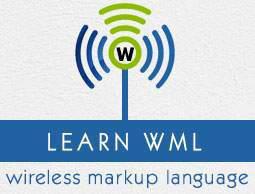WML - Formatting
This section will describe basic text formatting elements of WML.
Line Break:
The <br /> element defines a line break and almost all WAP browsers supports a line break tag.
The <br /> element supports the following attributes:
| Attribute | Value | Description |
|---|
| xml:lang | language_code | Sets the language used in the element |
| class | class data | Sets a class name for the element. |
| id | element ID | A unique ID for the element. |
Following is the example showing usage of <br /> element.
<?xml version="1.0"?>
<!DOCTYPE wml PUBLIC "-//WAPFORUM//DTD WML 1.2//EN"
"http://www.wapforum.org/DTD/wml12.dtd">
<wml>
<card title="Line Break Example">
<p align="center">
This is a <br /> paragraph with a line break.
</p>
</card>
</wml>
This will produce the following result:

Text Paragraphs:
The <p> element defines a paragraph of text and WAP browsers always render a paragraph in a new line.
A <p> element is required to define any text, image or a table in WML.
The <p> element supports the following attributes:
| Attribute | Value | Description |
|---|
| align | | This is used to change the horizontal alignment of a paragraph. |
| mode |
| Sets whether a paragraph should wrap lines or not. |
| xml:lang | language_code | Sets the language used in the element |
| class | class data | Sets a class name for the element. |
| id | element ID | A unique ID for the element. |
Following is the example showing usage of <p> element.
<?xml version="1.0"?>
<!DOCTYPE wml PUBLIC "-//WAPFORUM//DTD WML 1.2//EN"
"http://www.wapforum.org/DTD/wml12.dtd">
<wml>
<card title="Paragraph Example">
<p align="center">
This is first paragraph
</p>
<p align="right">
This is second paragraph
</p>
</card>
</wml>
This will produce the following result:

WML Tables:
The <table> element along with <tr> and <td> is used to create a table in WML. WML does not allow the nesting of tables
A <table> element should be put with-in <p>...</p> elements.
The <table /> element supports the following attributes:
| Attribute | Value | Description |
|---|
| columns | number | Sets the number of columns in the table |
| align |
| To specify the horizontal text alignment of the columns, you need to assign three letters to the align attribute. Each letter represents the horizontal text alignment of a column. The letter can be L, C, or R. For example, if you want the following settings to be applied to your table:
First table column -- Left-aligned Second table column -- Center-aligned Third table column -- Right-aligned
Then you should set the value of the align attribute to LCR. |
| xml:lang | language_code | Sets the language used in the element |
| class | class data | Sets a class name for the element. |
| id | element ID | A unique ID for the element. |
Following is the example showing usage of <table> element.
<?xml version="1.0"?>
<!DOCTYPE wml PUBLIC "-//WAPFORUM//DTD WML 1.2//EN"
"http://www.wapforum.org/DTD/wml12.dtd">
<wml>
<card title="WML Tables">
<p>
<table columns="3" align="LCR">
<tr>
<td>Col 1</td>
<td>Col 2</td>
<td>Col 3</td>
</tr>
<tr>
<td>A</td>
<td>B</td>
<td>C</td>
</tr>
<tr>
<td>D</td>
<td>E</td>
<td>F</td>
</tr>
</table>
</p>
</card>
</wml>
This will produce the following result:

Preformatted Text:
The <pre> element is used to specify preformatted text in WML. Preformatted text is text of which the format follows the way it is typed in the WML document.
This tag preserves all the white spaces enclosed inside this tag. Make sure you are not putting this tag inside <p>...</p>
The <pre> element supports following attributes:
| Attribute | Value | Description |
|---|
| xml:lang | language_code | Sets the language used in the element |
| class | class data | Sets a class name for the element. |
| id | element ID | A unique ID for the element. |
Following is the example showing usage of <pre> element.
<?xml version="1.0"?>
<!DOCTYPE wml PUBLIC "-//WAPFORUM//DTD WML 1.2//EN"
"http://www.wapforum.org/DTD/wml12.dtd">
<wml>
<card title="Preformatted Text">
<pre>
This is preformatted
text and will appear
as it it.
</pre>
</card>
</wml>
This will produce the following result:







